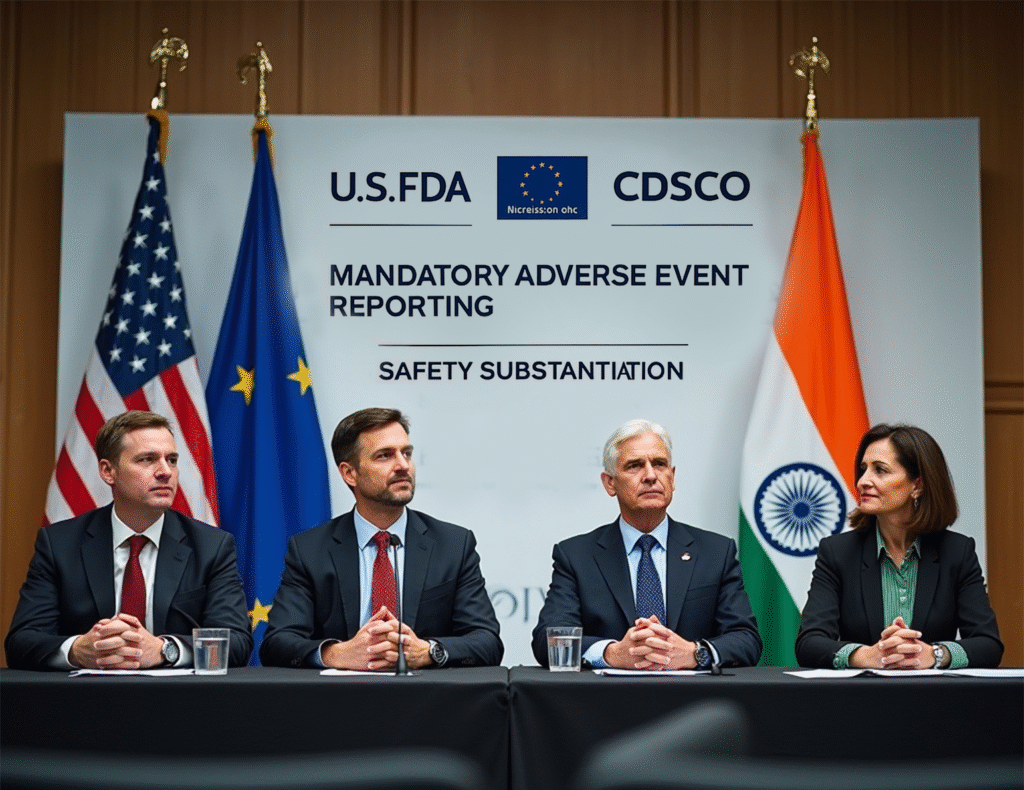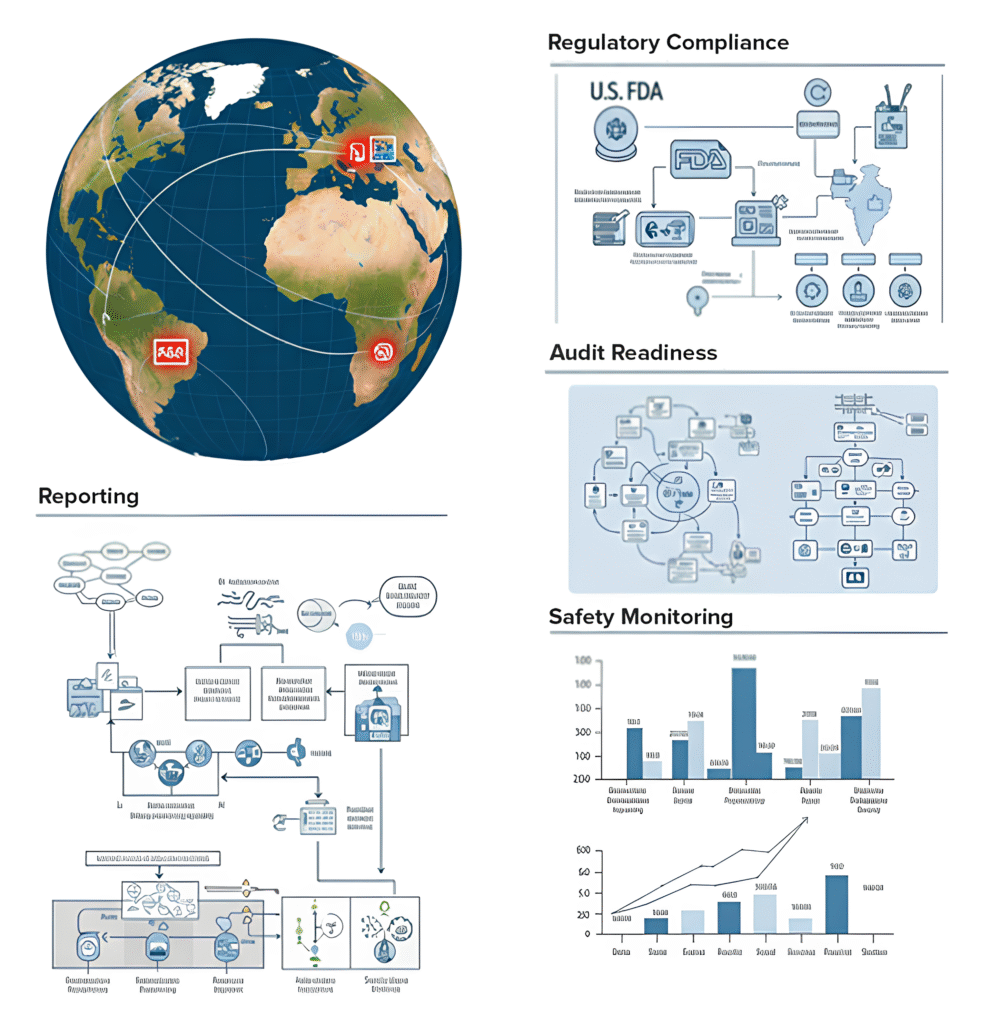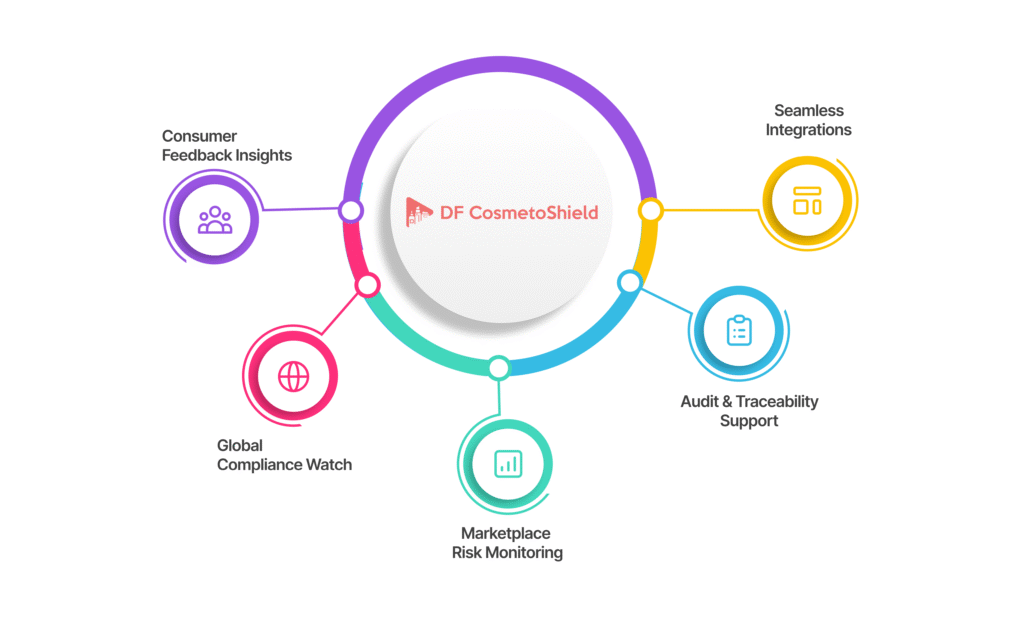In a world where appearance is currency and skincare routines are sacred, the cosmetic industry stands as a multi-billion-dollar titan. From anti-aging serums to “clean beauty” promises, the shelves are brimming with hope in a bottle. But behind the glossy packaging lies a harsh reality: the beauty industry is facing mounting challenges, from fraudulent practices to regulatory crackdowns. And for brands, the stakes have never been higher — because in today’s digital-first world, one compliance slip can do irreversible damage to brand trust
A critical examination of the underlying challenges within the cosmetic industry reveals that emerging risks require data-driven, technologically advanced solutions — where brand protection transcends regulatory compliance and becomes a cornerstone of strategic risk management.
The Hidden Wrinkles: Fraud, Counterfeits & Misinformation
Despite its sheen, the cosmetic world is riddled with vulnerabilities. Counterfeit products are flooding e-commerce platforms. In 2023, Interpol’s Operation Pangea seized over $5 million worth of counterfeit beauty products globally, many containing harmful substances like mercury, arsenic, or high levels of lead.
Moreover, fraudulent marketing practices are eroding consumer trust. Brands exaggerate benefits or hide ingredient lists behind vague “proprietary blend” claims. Social media influencers, incentivized by affiliate links and sponsorships, sometimes promote products without proper disclosure or testing.
Coupled with the emergence of AI-generated reviews and deepfake endorsements, the industry now faces an increasingly complex and volatile information landscape, where distinguishing authentic consumer feedback from fabricated content becomes progressively more challenging.
A Global Regulatory Wake-Up Call
In response to these growing threats, regulatory bodies around the world have begun tightening their grip on cosmetics — no market is immune. Here’s a snapshot of key global actions:
- ➣ United States (MoCRA 2022): The Modernization of Cosmetics Regulation Act requires every responsible person to register their facilities with FDA, list each marketed product, substantiate safety, and report “serious” adverse events within 15 business days. It even grants FDA mandatory recall authority for adulterated or misbranded cosmetics
- ➣ European Union (Cosmetics Regulation 1223/2009): Manufacturers must appoint a “responsible person” in the EU, perform a Cosmetic Product Safety Assessment, maintain a Product Information File (PIF), and ensure full ingredient and allergen labeling before market placement
- ➣ India (Cosmetic Rules 2020): Under the Drugs & Cosmetics Act, all cosmetics — including imports — must be registered via CDSCO’s SUGAM portal (Form COS-1), with mandatory renewal and strict limits on ingredients (e.g., salicylic acid caps). DCGI has increased inspections and made registration of imported cosmetics mandatory, targeting a crackdown on unapproved and misbranded products
- ➣ Egypt (Law No.151/2019 & EDA Guidelines): The Egyptian Drug Authority has rolled out an electronic notification system requiring a ten-year valid notification number, detailed composition disclosure, labeling artwork, and a free-sale certificate for all products — local or imported — before any sale in Egypt
- ➣ United Arab Emirates (Dubai Municipality & MoIAT): All cosmetics must register with Dubai Municipality’s Health & Safety Department and comply with GSO 1943:2024 safety requirements. Products are risk-classified (low/medium/high), require a local agent, and must carry a conformity certificate from the Ministry of Industry & Advanced Technology
- ➣ …and beyond: Dozens more jurisdictions — from Saudi Arabia’s SFDA notification system and Morocco’s new labelling mandates to Brazil’s ANVISA consultation on updated ingredient lists — are fast adopting similar frameworks
These aren’t just recommendations — they’re legal imperatives. Yet many brands struggle to keep pace: monitoring safety signals, auditing ingredient integrity, and aligning with evolving standards all while racing to launch the next viral skincare hit.
The Cost of Non-Compliance: A Real-Life Cautionary Tale
In 2019, a prominent U.S. skincare brand was exposed after its “natural” cream was found to contain hydroquinone — a prescription-only depigmenting agent. The fallout: FDA warnings, product recalls, lawsuits, and damage to brand reputation.
Across the Atlantic in 2025, the EU’s Safety Gate flagged a well-known Italian “natural” shampoo for containing Lilial, a banned allergenic compound — leading to compulsory recalls in Spain and Italy after consumers reported irritation. Meanwhile, EU regulators continue to crack down on shampoos sold in Asia that include other substances outlawed in the EU due to reproductive or allergy risks.
In India, baby lotions marketed as “herbal” have been cited repeatedly by the CDSCO for containing banned preservatives such as mercury compounds and formaldehyde-releasing agents — substances explicitly prohibited under the Indian Cosmetics Rules. These violations triggered regulatory warnings, batch recalls, and legal scrutiny
Down under in Australia, consumer group CHOICE found that 16 out of 20 popular SPF 50/50+ sunscreens (including three Cancer Council endorsed lines) failed independent lab tests — some delivering as little as SPF 4. The fallout included widespread product withdrawals, investigations by the Therapeutic Goods Administration and ACCC, and sharp declines in consumer trust.
How AI-Driven Vigilance Can Save Brands Millions
In the high-stakes world of cosmetic products — where consumer trust, regulatory compliance, and brand reputation intersect — digital safety platforms have emerged as indispensable tools in cosmetovigilance. These platforms integrate real-time data capture, adverse event reporting, signal detection algorithms, and regulatory intelligence to monitor product safety across global markets.
By aggregating signals from consumer complaints, dermatological case reports, social media, and supply chain inputs, they enable early identification of safety concerns — long before they escalate into public health incidents or legal liabilities. In fact, proactive use of such platforms can help brands prevent costly recalls, class-action lawsuits, and reputational damage, potentially saving millions of dollars annually. Moreover, by aligning with international safety regulations — such as the EU’s RAPEX, FDA’s MedWatch, or India’s CDSCO Cosmetics Rules — these systems ensure that cosmetic companies are not just reacting to crises but anticipating and mitigating them with precision. In an industry where one adverse event can spiral into global scrutiny, intelligent safety infrastructure isn’t optional — it’s strategic Armor.
Your Beauty Safety Net: DF CosmetoShield
That’s why Datafoundry is proud to unveil DF CosmetoShield — a unified, AI-driven platform designed for today’s global beauty ecosystem. Seamlessly blending real-time safety surveillance, global regulatory intelligence, and proactive risk alerts, it transforms compliance from a checkbox into your brand’s competitive advantage.
Core Benefits:
- ➣ Global Compliance Watch: Keeps you informed of evolving safety requirements across the US, EU, India, and other key markets.
- ➣ Consumer Feedback Insights: Tools to help interpret consumer submitted feedback — whether pasted from social channels, web forms, or customer service transcripts — so you can spot potential safety concerns early.
- ➣ Marketplace Risk Monitoring: Offers AI-assisted checks to help identify unusual or unauthorized listings, safeguarding your brand’s reputation.
- ➣ Audit & Traceability Support: Generates consolidated safety reports and audit trails to support internal reviews or inspections.
- ➣ Seamless Integrations: Easily connects with platforms like Salesforce or Zendesk to fold into your existing intake and triage workflows.
Brand Safety Is the New Brand Equity
In an era where consumers demand transparency and trust, cosmetovigilance is no longer optional — it’s foundational. Brands that embed robust safety and compliance frameworks not only mitigate risk but also build lasting loyalty. Because while trends fade, credibility built on scientific integrity endures.



